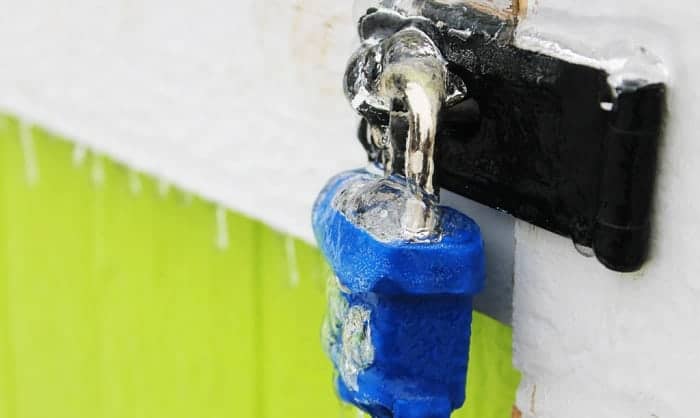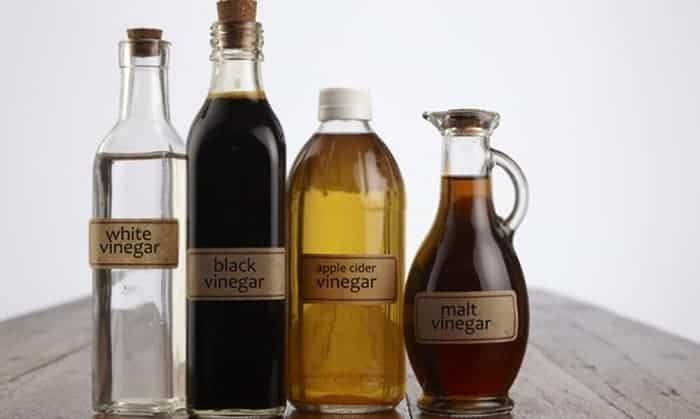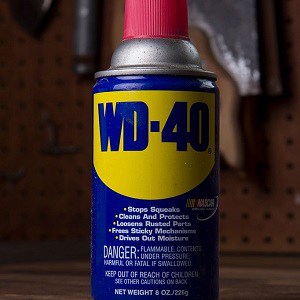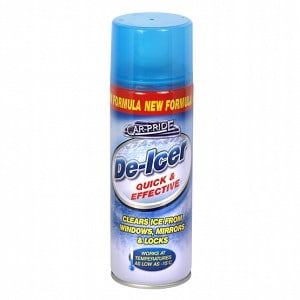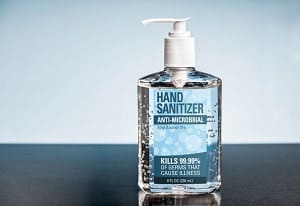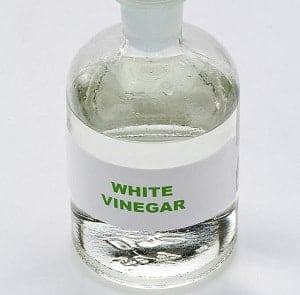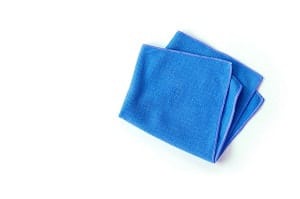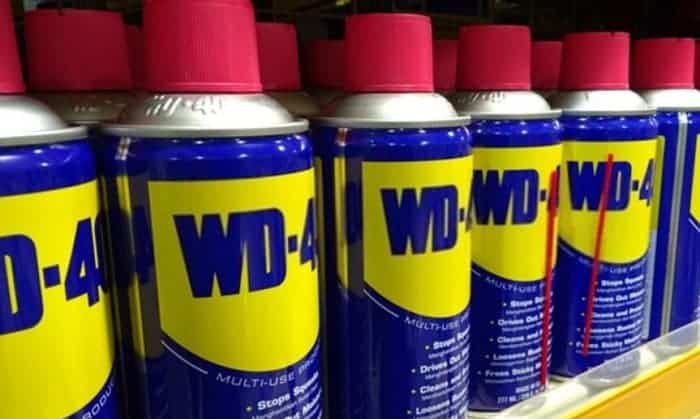Countries with sub-zero winters face the problem of freezing snow everywhere. While you want to go home early to enjoy a cup of hot chocolate by the fireplace, the frozen lock prevents you from doing so. It can be any type of lock that is exposed to external conditions such as car locks, door locks, or windows.
But don’t worry because, with some preparation and a few standard tools, you will soon be able to insert the keys. Before winter hits, arm yourself with a few helpful methods on how to unfreeze a lock that I have tried and will show you in the article below.
Table of Contents
What Happens When Water Gets Into the Lock
When the temperature drops below 32 degrees Fahrenheit, ice begins to emerge from water molecules. In the air, there is always humidity, which is known as relative humidity (RH). That’s why your lock stays dry when you leave it, but the ice crystals still cling to it.
Tools and Equipment
WD-40
Frozen lock WD-40, which contains alcohol-based components, can be used to cleans and resist external factors. Its defrosting mechanism is quite simple when heating the lock and withdrawing things clinging to the lock, including water. This is a controversial way, especially when applied a lot, because it can harm your padlock by destroying the paint or cause it to lose its lubrication.
But for its convenience, I advise you to have this lock freeze spray ready in your car and house for urgent cases. In addition, WD-40 is a temporary lubricant that is easy to apply and remove.
De-icer spray
Compared to the method above, I recommend using this frozen lock spray specifically for defrosting. All you need to do is spray the solution directly on the frozen area. You will be surprised by its instant action in a minute without destroying the appearance.
However, it will not have the same protective effect as the WD-40 and is unlikely to last long on the lock. So it requires you to be prepared before the problem occurs. This method is still commonly used to unfreeze a deadbolt lock since it does not generate heat that can destroy the lock structure.
Hand sanitizer
During the time of the present pandemic, you must always have this with you. Fortunately, along with the alcohol basis, this is a method to decrease water’s freezing point. The concentration of substances has been neutralized to be safe for users. So, you just need to put a little liquid on your key but not too much because you might break the key.
White vinegar
For this method, you need to mix white vinegar with a ratio of 3:1 with room temperature plain water. Doing so will help reduce the concentration of vinegar and cause less damage to your locks. To remove the ice layer, put the mixture in a spray bottle and spray it directly on the lock, so it acts like a de-icer.
Lighter, hairdryer, or torch
In case you do not have specialized items prepared in advance, calmly look for heat-generating items like the ones above, be they in your car, pocket, or around the house. Although this method is safe, the process can take quite a lot of patience and time.
Remember to heat the key before inserting it into the frozen house door lock. Direct heating of the lock can damage the shape of the keyhole. These items are not special items for defrosting, so try them repeatedly to refresh the heat generated. Be careful with the fire created by the lighter.
Breath
It sounds strange, but it is possible in case you don’t carry any items with you. Create a closed space with both your two palms and place it close to your padlock. You can create heat from your mouth by making your mouth into an A shape instead of a U one.
While doing so, do not keep your hands in contact with the ice for a long time as you may get a cold burn. Be patient and try re-inserting the key a few times to check if the ice has melted enough.
Cloth or Handkerchief
Like the above method, this is the last option that you can try. If you wear clothes to warm your body, they can also heat the locks and thaw the ice. The process can take from a few to tens of minutes, depending on the amount of ice on your lock. I have tried, and it worked, so don’t worry and be patient!
Pro-tip to Avoid Making It Worse
- Do not try to force the key. Many people often put pressure on the key to break the ice. However, this method may cause your key to be deformed or bent, and you will not be able to insert the key even after the ice has melted.
- Do not pour hot water directly on the lock. Normally, high temperatures along with water will assist in melting the ice in the refrigerator faster. But in this case, the temperature is so low that the water even freezes before it can thaw. Furthermore, there have been scientific studies proving that hot water freezes faster than cold water.
Things to Do
- Be calm. Please calmly search for the aforementioned items and try the above methods. They are all ways that many people did successfully and recommended.
- Call the locksmith. Save the locksmith’s phone number in case the worst happens. You certainly don’t want to wait until the sun rises and the ice melts.
- Call for help. Use your communication and relationship skills to ask for help from a kind neighbor. Don’t be afraid to be poked, and remember to give them a cake when you get in.
- Prepare in advance. Have your tools be with you when winter comes and keep them in a safe and easy-to-find place. Problems can happen to you at any time.
- Protect your locks. There are many ways to prevent freezing, like using socks to wrap your padlocks, and lock lubricants like graphite or petroleum jelly. These have the same mechanism as the WD-40.
- Change your padlock. Nowadays, many designs such as weatherproof locks or magnet locks can prevent the ingress of moisture and outside elements. These will cost a little more but will save you from unlucky cases.
Conclusion
Frozen locks are a rare occurrence that no one wants. But if you live in a country with cold winters, it is better to arm yourself with tools and knowledge. In addition, periodically check the health of your locks to make sure the above methods are working at their best.
I’ve shared with you helpful tips and tricks in the hopes of teaching you a thing or two about methods on how to unfreeze a lock conveniently and correctly. Leave your thoughts in the comments below. Send me an email if you want to explore any other subjects as well.

I am the last member to join Revolar and might be just the luckiest to work with dedicated people like Teddy and John. Our team has established a process where my only job is writing the best content to deliver incredible ideas and guides.


